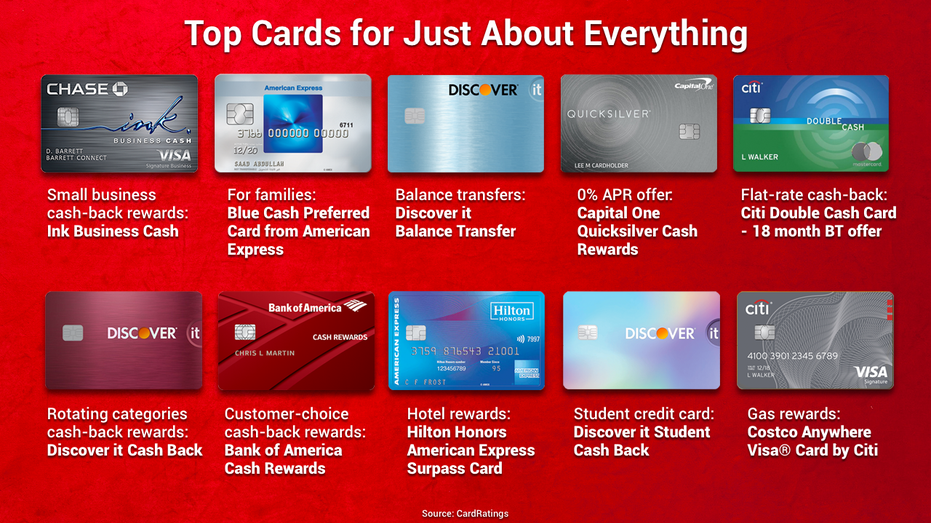Above Lending Beyond Finance
A New Frontier: Exploring Finance Beyond Lending
Welcome, fellow financial enthusiasts! Today, we embark on a thrilling journey into uncharted territory as we explore a new frontier in the world of finance – beyond the traditional realm of lending. In this era of rapid technological advancements and evolving consumer behaviors, the landscape of financial services is constantly shifting. Join us as we delve into innovative strategies, emerging trends, and exciting opportunities that are reshaping the way we think about finance. Get ready to expand your horizons and discover what lies beyond the realm of traditional lending!
Exploring Alternative Investment Opportunities
When it comes to investing, most people typically think of stocks, bonds, and real estate. However, there are many alternative investment opportunities that can potentially offer higher returns and diversification for your portfolio. Alternative investments include assets such as private equity, hedge funds, commodities, cryptocurrencies, and even collectibles like art and wine. These investments can provide opportunities for investors to capitalize on market inefficiencies and generate alpha.
One popular alternative investment option is private equity. Private equity involves investing in privately held companies that are not listed on a public stock exchange. These investments can offer high returns, but they also come with higher risks and longer investment horizons. Private equity investments often involve taking an active role in the management of the company to help drive growth and profitability.
Another alternative investment to consider is hedge funds. Hedge funds are investment funds that use a variety of strategies to generate returns for their investors. These strategies can include long/short equity trading, event-driven investing, and macroeconomic trading. Hedge funds are known for their ability to provide uncorrelated returns to traditional asset classes like stocks and bonds, making them attractive for diversification purposes.
Commodities are another alternative investment that can help diversify your portfolio. Commodities include assets like gold, oil, and agricultural products. These assets have unique supply and demand dynamics that can provide opportunities for investment returns. Investing in commodities can help protect against inflation and currency risks that traditional assets may be exposed to.
Cryptocurrencies have also emerged as a popular alternative investment option in recent years. Bitcoin and other digital currencies have gained widespread adoption and acceptance as a legitimate asset class. Investing in cryptocurrencies can provide the potential for high returns, but they also come with high volatility and regulatory risks. It’s important to do thorough research and understand the risks before investing in this asset class.
For those interested in tangible assets, collectibles like art and wine can also be viable alternative investment opportunities. These assets have the potential to appreciate in value over time and can provide diversification benefits to a traditional investment portfolio. However, investing in collectibles requires specialized knowledge and due diligence to ensure that you are making sound investment decisions.
Exploring alternative investment opportunities can help you diversify your portfolio and potentially enhance your returns. However, it’s important to carefully consider your risk tolerance, investment goals, and time horizon before investing in these assets. By doing thorough research and seeking advice from financial professionals, you can identify the alternative investments that align with your investment objectives and help you achieve your financial goals.
The Rise of Socially Responsible Lending Initiatives
As society becomes more aware of the impact of their actions on the environment and those around them, there has been a shift towards socially responsible lending initiatives. These initiatives go beyond traditional finance and aim to provide loans and financial services that support communities and promote sustainability.
One of the key drivers behind the rise of socially responsible lending initiatives is the growing demand from consumers who want to align their values with their financial decisions. People are increasingly looking for ways to support businesses that are making a positive impact on the world, and socially responsible lending provides them with an avenue to do so.
These initiatives also address the need for more inclusive financial services, particularly in underserved communities. By focusing on providing fair and affordable loans to those who may not have access to traditional banking services, socially responsible lenders are helping to bridge the gap and create a more equitable financial system.
Furthermore, socially responsible lending initiatives often prioritize environmental sustainability and ethical business practices. This means that borrowers can rest assured that their money is being used in a way that benefits both people and the planet. Whether it’s funding renewable energy projects or supporting fair trade businesses, these initiatives are making a tangible impact on the world.
Another important aspect of socially responsible lending initiatives is their focus on transparency and accountability. These lenders are committed to being open and honest about their practices, so borrowers can trust that their money is being used responsibly. This level of transparency helps to build trust with customers and ensures that the impact of their loans is positive.
Overall, the rise of socially responsible lending initiatives represents a shift towards a more conscious and sustainable approach to finance. By choosing to work with lenders who prioritize social and environmental impact, individuals can make a real difference in the world while also meeting their financial needs. As these initiatives continue to grow in popularity, they are proving that finance can be a force for good in society.
Analyzing the Impact of Technology in Peer-to-Peer Lending
Peer-to-peer lending, also known as P2P lending, has revolutionized the way individuals borrow and lend money. This innovative form of lending connects borrowers directly with investors through online platforms, cutting out the traditional financial institutions. The use of technology has played a significant role in the success and growth of the peer-to-peer lending industry.
One of the key impacts of technology in peer-to-peer lending is the automation of the lending process. Online platforms use algorithms and data analytics to assess borrowers’ creditworthiness and assign them a risk rating. This automation streamlines the lending process, making it quicker and more efficient than traditional loan applications. Borrowers can submit their loan requests online and receive funding within days, rather than weeks or months.
Furthermore, the use of technology has also made peer-to-peer lending more accessible to a wider range of borrowers. Traditional financial institutions often have strict lending criteria, making it difficult for those with less-than-perfect credit to secure a loan. In contrast, peer-to-peer lending platforms utilize alternative data sources and technology to assess the creditworthiness of borrowers who may not meet traditional lending criteria. This increased access to credit has empowered individuals who were previously underserved by the banking system.
Another significant impact of technology in peer-to-peer lending is the ability to provide real-time monitoring and reporting. Investors can track the performance of their investments online, viewing details such as repayment schedules, interest payments, and account balances. This level of transparency and control was previously unavailable in traditional lending setups. Investors can make informed decisions based on real-time data, increasing their confidence in the lending process.
Additionally, the use of technology has enabled peer-to-peer lending platforms to foster a sense of community among borrowers and investors. Online forums, chat rooms, and social networking features allow users to engage with each other, share experiences, and provide support. This sense of community not only enhances the overall user experience but also creates a sense of trust and loyalty among users.
In conclusion, the impact of technology in peer-to-peer lending has been profound, revolutionizing the way individuals access credit and invest their money. The automation of the lending process, increased access to credit, real-time monitoring and reporting, and community-building features have all contributed to the success and growth of the peer-to-peer lending industry. As technology continues to evolve, we can expect further innovations and enhancements in the peer-to-peer lending space, making it an even more attractive option for both borrowers and investors alike.
The Role of Microfinance in Empowering Underserved Communities
Microfinance plays a crucial role in empowering underserved communities by providing access to financial services that may otherwise be inaccessible to them. These services include small loans, savings accounts, insurance, and financial literacy training. By offering these services, microfinance institutions help individuals and small business owners in low-income communities to improve their financial stability and grow their businesses.
One of the key benefits of microfinance is that it helps to promote financial inclusion. Many people in underserved communities do not have access to traditional banking services, either because they are unable to meet the stringent requirements set by banks or because there are no banks located near their communities. Microfinance institutions bridge this gap by offering a range of financial products and services tailored to the specific needs of low-income individuals and small business owners.
Furthermore, microfinance helps to promote entrepreneurship and job creation in underserved communities. By providing small loans to individuals who may not qualify for traditional bank loans, microfinance institutions empower individuals to start their own businesses or expand existing ones. This, in turn, helps to stimulate economic growth and create employment opportunities in communities that may otherwise be struggling economically.
Another important role of microfinance in empowering underserved communities is the promotion of financial literacy. Many people in low-income communities may not have a good understanding of basic financial concepts such as budgeting, saving, and investing. Microfinance institutions provide financial education and training to their clients, empowering them to make informed decisions about their finances and improve their overall financial well-being.
Additionally, microfinance can also help to promote gender equality and empower women in underserved communities. In many parts of the world, women have limited access to financial services and are often excluded from traditional banking systems. Microfinance institutions specifically target women as clients, providing them with the financial tools and resources they need to start businesses, generate income, and become economically independent.
In conclusion, microfinance plays a vital role in empowering underserved communities by providing access to financial services, promoting financial inclusion, supporting entrepreneurship and job creation, promoting financial literacy, and empowering women. By addressing the unique financial needs of individuals and small business owners in low-income communities, microfinance institutions help to create opportunities for economic growth, poverty reduction, and sustainable development.
Navigating the Regulatory Landscape of Crowdfunding Platforms
When it comes to navigating the regulatory landscape of crowdfunding platforms, there are several key factors to consider. One of the most important aspects to keep in mind is understanding the regulatory framework that governs these platforms. In the United States, for example, crowdfunding platforms are regulated by the Securities and Exchange Commission (SEC), which oversees the market and ensures compliance with securities laws.
Additionally, it is crucial to be aware of the different types of crowdfunding models available and the regulations that apply to each. For instance, equity crowdfunding involves selling shares of a company to investors, while reward-based crowdfunding offers backers a reward in exchange for their support. Understanding the distinctions between these models can help ensure compliance with the appropriate regulations.
Another key consideration when navigating the regulatory landscape of crowdfunding platforms is due diligence. It is essential to conduct thorough research on both the platform itself and the projects available for investment. This includes verifying the legitimacy of the platform, evaluating the risk associated with different projects, and ensuring that all necessary disclosures have been made to investors.
Compliance with anti-money laundering (AML) and know your customer (KYC) regulations is also a crucial aspect of navigating the regulatory landscape of crowdfunding platforms. These regulations are designed to prevent money laundering and terrorist financing by requiring platforms to verify the identities of their users and monitor transactions for suspicious activity. By ensuring compliance with AML and KYC requirements, platforms can protect themselves and their investors from potential legal and financial risks.
Furthermore, staying up to date on changes to regulatory requirements is essential for navigating the ever-evolving landscape of crowdfunding platforms. Regulations surrounding crowdfunding are subject to change as the industry continues to grow and evolve, so it is important to stay informed and adapt accordingly. This might involve seeking legal counsel or consulting with experts in the field to ensure compliance with the latest regulations.






